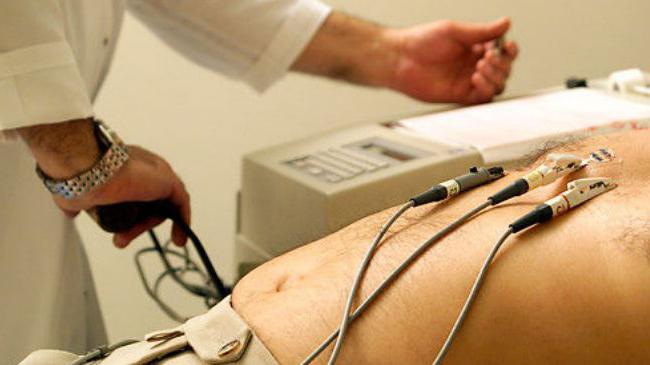Heart arrhythmia, symptoms, forms and complications
Signs of this pathological conditionare found in the elderly and in young people. Arrhythmia of the heart, the symptoms of which concern many, is fundamentally disturbed by such functions of the myocardium as automatism, excitability and conductivity. The reasons for this may be different. First of all, these are organic and functional changes in the heart and its conducting system. For example, myocardial ischemia, myocardial infarction, cardiosclerosis, inflammatory changes in the myocardium and valves, heart defects, myocardial dystrophy, pulmonary heart.
Can lead to arrhythmias and impaired regulationwork of the heart. They are associated with psychoemotional stress, diseases of the autonomic or central nervous system, diseases of the endocrine glands, other organs. For example, extrasystole often occurs in the menopause; paroxysmal tachycardia is common in diseases of the thyroid gland.
Arrhythmias can occur under the influence of drugs (digitalis, beta-blockers, etc.) and toxic substances.
Arrhythmia of the heart, the symptoms of various forms of which are often similar, are divided into different forms according to their origin:
- Associated with violations of the automatism of the myocardium. This includes sinus bradycardia and tachycardia, respiratory arrhythmia of the heart and some other types of disorders.
- Associated with impaired excitability. They are represented by extrasystole and paroxysmal tachycardia.
- There are violations of conduction of the heart. These types of arrhythmias include sino-auricular, atrial, incomplete and complete atrial-ventricular and intraventricular blockades.
- Caused by disturbance and excitability, and conduction: flicker and flutter of the atria and ventricles.
- Reduced cardiac contractility: an alternating and paradoxical pulse.
There are several dozens of heart rhythm disturbances. Let us touch upon the signs of those that occur most often.
With such pathologies as cardiac arrhythmias, symptomsconsist in the acceleration or slowdown of its contractions, the violation of their correct alternation. Sometimes patients do not feel them, they are detected only on the ECG. However, in a number of cases they pose a danger to the condition and even the life of the patient.
With tachycardia, the pulse becomes faster. If the normal heart rate is 60-80 beats per minute, then with paroxysmal tachycardia it can increase to 160-200 or more strokes. The rhythm is incorrect. The patient has a fear of death.
With bradycardia, the pulse, on the contrary, slows down.
With respiratory arrhythmia, the pulse rate slows down by inhalation and increases with exhalation.
Patients with extrasystole complain of interruptions inheart and a sense of his fading. They are associated with the occurrence of an extraordinary contraction of the atrium or ventricles and the next, the so-called refractory period, following it.
With cardiac blockade, the pulse slows down,there are feelings of sinking heart. Depending on the degree of blockade, dizziness, fainting, darkening in the eyes may be added to these symptoms.
A few words about what is dangerous is the arrhythmia of the heart. As already mentioned, it has different causes and often indicates severe damage to the heart or other body systems.
In addition, sometimes there is an arrhythmia of the heart,the symptoms of which can endanger life. So, ventricular ekstrasistolija or a flutter of ventricles can become the reason of a cardiac arrest. Atrial fibrillation can lead to heart failure and pulmonary edema. Some forms of arrhythmias cause sudden death.
In each case, the diagnosis and treatment of rhythm disturbances should be addressed by the cardiologist. Be attentive to your health!
</ p>>

